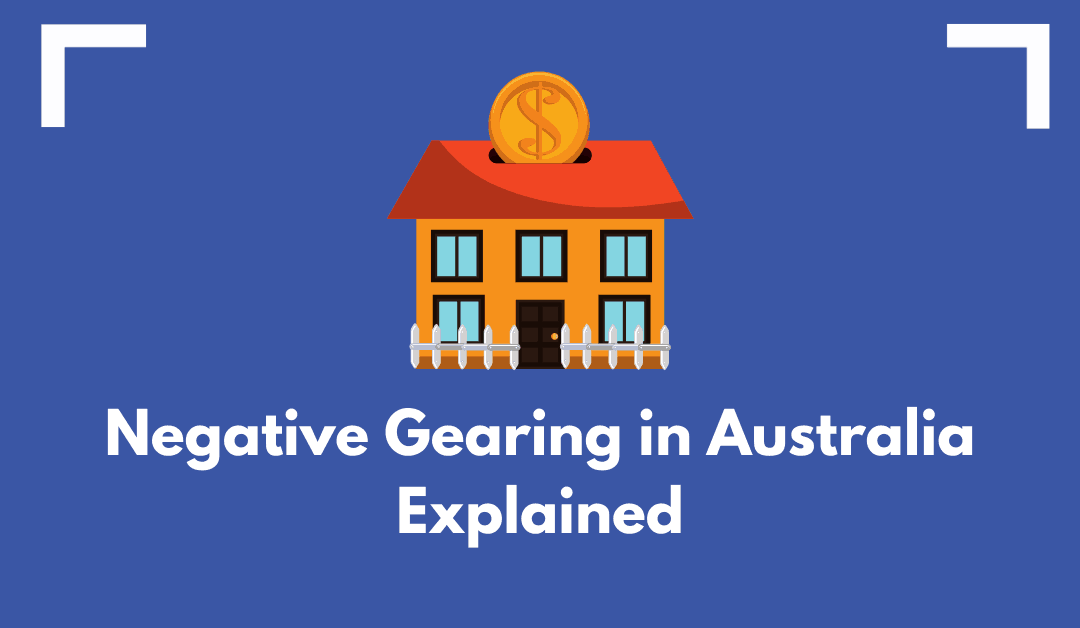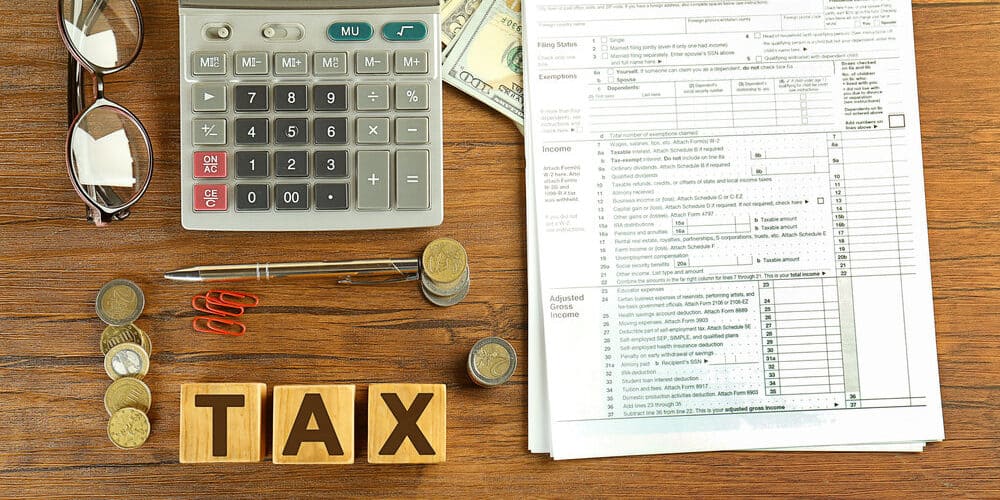
BY
|
The Only Guide You’ll Need On Negative Gearing
So you’ve heard all the hype about negative gearing in Australia and want to know what it’s all about? Or maybe you’re buying a property and trying to decide if negative or positive gearing is for you.
This article will explain what it is and who it’s for, share some tips, and debunk some myths so you can be informed when you buy your next property.
What is Negative Gearing?
At its most basic level, gearing is borrowing to invest. For the purpose of this article, we are talking about gearing only for property investments.
Negative gearing can be a complicated topic, but the simplest way to explain negative gearing in Australia for property investment is this:
An investment property is negatively geared when the total expenses (including the interest on the loan used to buy the property) are more than the rental income earned on the property.
And positive gearing is the opposite: when your net rental income is greater than the expenses, including interest on the loan.
How Negative Gearing Works for Investment Property: Formulas and Calculations
Let’s look at the formulas and calculations involved to understand how negative gearing works. The basic formula is:
Net Rental Income – Property Expenses – Loan Interest = Net Rental Loss or Positive Gearing
If the result is negative, the property is negatively geared. If positive, it’s positively geared.
For example, let’s say your annual rental income is $26,000, property expenses are $6,000, and the loan interest is $30,000. The calculation would be:
$26,000 – $6,000 – $30,000 = -$10,000
Since the result is negative, this property is negatively geared.
Negative Gearing Benefits for Australians?
Most investors choose to gear as a tax minimisation strategy negatively. But what does this mean?
By making a loss on the income of your property, you can reduce your tax bill. As your investment income and income from your job or business are added together, you can reduce your total assessable income if you are making a loss and thus save yourself in tax.
So, how does this work in the long run?
Growth in the property. Investors hope that by negatively gearing their property, recouping some of the tax losses along the way, and taking advantage of the 50% CGT discount when they sell the property, they will make a profit in the long run through capital gain and reduced capital gains tax.
The capital gains tax concession introduced by the Howard government allows investors to pay significantly lower tax rates on their profits.
The tax savings are particularly beneficial to middle-to-high-income earners who are taxed at a higher rate in Australia, as negative gearing can reduce their overall income tax payable by offsetting losses against their income.
Negative Gearing vs Other Property Investment Strategies
While negative gearing is a popular strategy, it’s not the only option for investment properties. Other approaches include:
- Positive Gearing: You get a positive cash flow when rental income exceeds loan interest and expenses. Suitable for investors who focus on income rather than capital growth.
- Rentvesting is renting where you want to live and buying an investment property elsewhere. It allows you to enter the market sooner in a more affordable area.
Each strategy has pros and cons, depending on your financial situation, goals, and risk tolerance. It’s worth talking to a financial advisor before deciding which path to take.
Negative Gearing Example
George and Katherine both earn around $100,000 per year. They are both thinking of buying an investment property worth $500,000. The interest on their investment loan is 6% pa interest only.
They will have extra property expenses of $6,000 a year. Rental income is expected to be $500 a week ($26,000 a year).
George will need to borrow $500,000 to buy his investment apartment, as he has no savings. The interest on the loan is $30,000 a year, which is tax deductible.
Katherine has some savings, so she only needs to borrow $100,000 for a similar apartment. Her interest payment is $6,000 a year, which is also tax deductible.
| Income prior to buying property | George | Katherine | Katherine: Positively Geared |
| Salary $100,000 | $100,000 | $100,000 | $70,000 |
| Add rental income – | $26,000 | $26,000 | $26,000 |
| Less interest – | – $30,000 | – $6,000 | – $6,000 |
| Less property expenses – | – $6,000 | – $6,000 | – $6,000 |
| Net Taxable income | $90,000 | $114,000 | $84,000 |
| Income Tax | – $21,097 | – $30,597 | – $18,847 |
| NET INCOME | $68,903 | $83,403 | $65,153 |
Note: This is the first year and doesn’t take into account fluctuations in rental income, interest rates, land tax, or depreciation. Over time, taxable income could exceed tax deductions, and the property may no longer be negatively geared.
As you can see, George is negatively geared, and Katherine is positively geared. George has less money in his pocket despite saving more in tax. He will rely on future potential capital gains to get that back and will need to pay tax on any profits made from the sale of the property. This example doesn’t apply to owner-occupied situations.
The Economic Impact of Negative Gearing on Housing Affordability
Some say negative gearing increases housing supply and keeps rents low, but the research says otherwise. Over 90% of negatively geared properties are existing dwellings, not new housing stock.
There is also concern that negative gearing inflates house prices by encouraging speculative investment, reducing affordability for owner-occupiers. But how much of an impact is that?
Critics argue that negative gearing and capital gains tax concessions contribute to the housing crisis by making property investment more attractive and driving up prices.
From a broader economic perspective, negative gearing is a significant cost to the federal budget in terms of lost tax revenue. Critics say that money could be better spent on more direct housing affordability measures.
Ultimately, negative gearing is just one of many factors in the housing market. It does play a part, but not the only one.
The Risks and Drawbacks of Negative Gearing
In a housing boom, it’s easy to do the calculations and figure that negative gearing in Negative gearing has its benefits, but it’s not without risks. Some of the downsides are:
- Cash flow strain: Negatively geared properties are a loss, so you have to cover the shortfall from other income. This can squeeze your budget.
- Market downturns: If property values fall, you could owe more than the property is worth. This is a big risk if you have a small deposit and high borrowings.
- Interest rate rises: An increase in interest rates will increase the loss, so you need to factor that into your budget. Can you still afford the repayments in a higher-rate environment?
- Policy changes: Negative gearing is part of the tax system, but that may only sometimes be the case. The impact of any future changes is unknown.
- Opportunity cost: The money you put into a negatively geared property might get better returns elsewhere, so you need to consider negative gearing as part of an investment strategy.
None of this is to say negative gearing is a bad strategy – just that it’s not a guaranteed way to get rich. As with any investment, it’s about weighing the risks and rewards to see if it’s for you.
Myths of Negative Gearing
Negative Gearing Myth #1: Negative Gearing Increases the Supply of Homes
According to the statistics, over 90% of mortgages are for existing homes, not new ones. So, negative gearing in Australia has no impact on the new housing supply.
Negative Gearing Myth #2: Negative Gearing Reduces Rent
Simple economics will tell you supply and demand are the only factors determining price. People correlate property investment to increased supply, but that’s not true, and studies have shown it has no or potentially opposite effect.
Negative Gearing Myth #3: Negative Gearing Means Maximum Property ROI
The property investment market can be like the health industry—there is a lot of conflicting advice and misinformation. In the frenzy of buying a property during an unprecedented housing boom, many investors use negative gearing in Australia as a major factor in choosing a property. This can be a big problem.
Investors can often overlook or downplay other factors that affect the quality of an investment property in order to negatively gear it.
Negative Gearing Myth #4: Negative Gearing Helps Low-to-Middle Income Classes the Most
One of the biggest factors to consider when deciding to negative gear is your taxable income and tax bracket. Given our progressive tax system, higher income brackets get bigger tax breaks from negative gearing, so it helps the top end of town more than your average family.
Key Takeaways
Like any investment, the general strategy for property is to grow wealth. People correlate this with capital growth, which can be achieved positively or negatively geared. Negative gearing in Australia offers the added bonus of reducing your tax burden with your property investment.
When it comes to deciding if negative gearing is for you, there is no one-size-fits-all answer. With so many variables to consider, it’s important to assess your individual financial and personal situation before you decide to invest in negative gearing your property.
Get a second opinion from a financial planner or accountant. This is one of the most significant investments most people will ever make, so it pays to do your due diligence to avoid getting caught in a debt spiral later on.Box Advisory Services can help you with your investment decisions whether for business or personal.
Book in a free consultation with us or call us today.
Sign up to our monthly newsletter where we share exclusive small business and contractor advice!
Disclaimer:
All information in this guide has been prepared with care. However, please note that the information is general and is intended as an overview of general information available to contractors and small businesses. This guide is not exhaustive and should not be relied upon as legal or tax advice. Where necessary, please seek your own advice for any legal or tax issues in your business.



